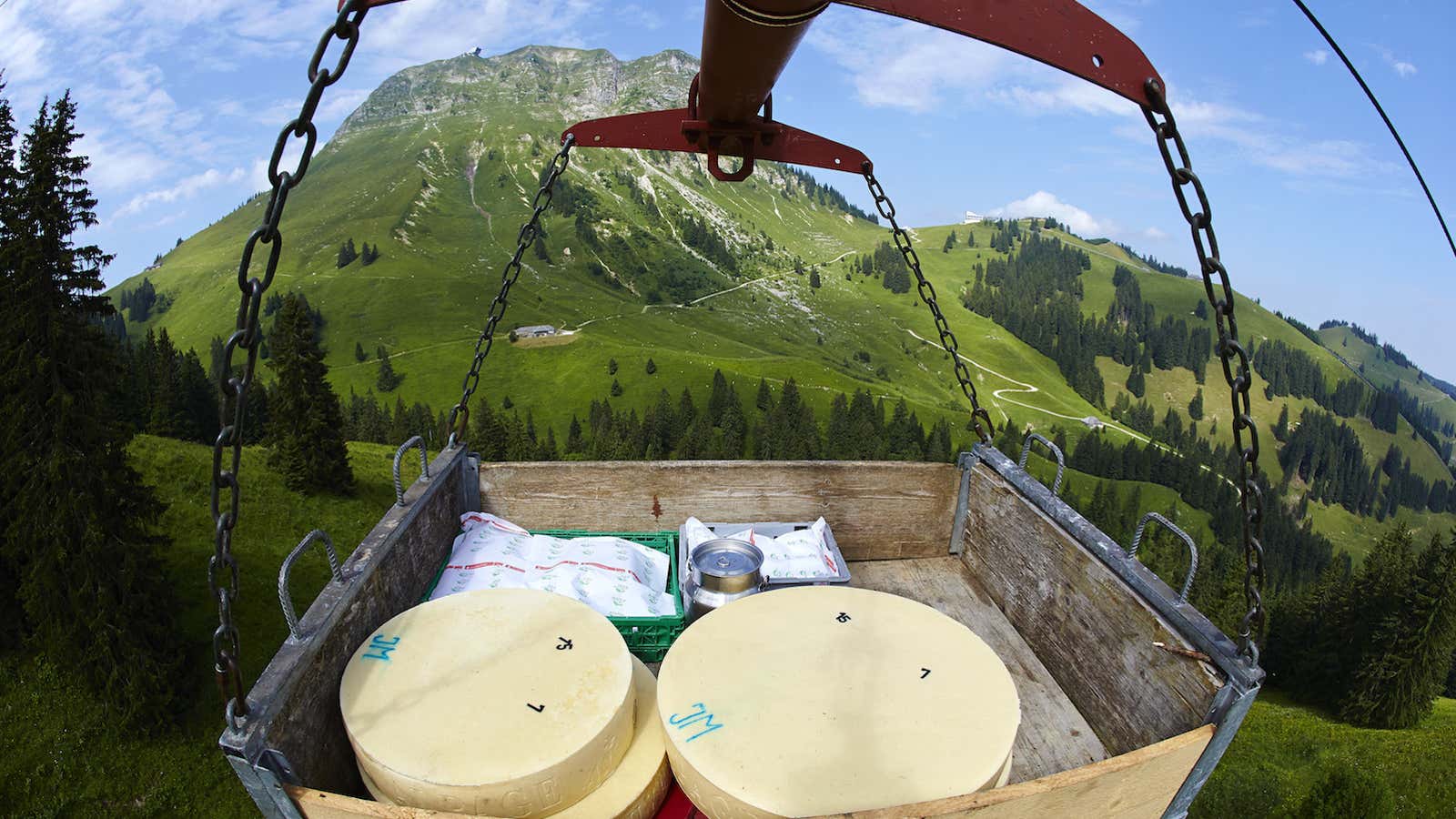This is the story you’ll often hear about how humans discovered cheese: one hot day 9,000 years ago, a nomad was on his travels, and brought along some milk in an animal stomach—a sort of proto-thermos—to have something to drink at the end of the day. When he arrived, he discovered that the rennet in the stomach lining had curdled the milk, creating the first cheese.
But there’s a major problem with that story, according to University of Vermont cheese scientist and historian Paul Kindstedt: the nomads living in the Fertile Crescent of the Middle East in 7000 BC would have been lactose-intolerant.
A nomad on the road wouldn’t have wanted to drink milk; it would have left him in severe gastro-intestinal distress.
Kindstedt, author of the book Cheese and Culture, explained on Gastropod that about 1,000 years before traces of cheese-making show up in the archaeological record, humans began growing crops.Those early fields of wheat and other grains attracted local wild sheep and goats, which provide milk for their young.
Human babies are also perfectly adapted for milk. Early humans quickly made the connection and began dairying—but for the first thousand years, toddlers and babies were the only ones consuming the milk.
Human adults were uniformly lactose-intolerant, says Kindstedt. What’s more, he told us that “we know from some exciting archaeo-genetic and genomic modeling that the capacity to tolerate lactose into adulthood didn’t develop until about 5500 BC”—which is at least a thousand years after the development of cheese.
The dawn of cheese
The real dawn of cheese came about 8,500 years ago, with two simultaneous developments in human history.
First, by then, over-intensive agricultural practices had depleted the soil, leading to the first human-created environmental disaster. As a result, Neolithic humans began herding goats and sheep more intensely, as those animals could survive on marginal lands unfit for crops.
And secondly, humans invented pottery: the original practical milk-collection containers.
In the warm environment of the Fertile Crescent region, Kinstedt explained, any milk not used immediately and instead left to stand in those newly invented containers “would have very quickly, in a matter of hours, coagulated [due to the heat and the natural lactic acid bacteria in the milk]. And at some point, probably some adventurous adult tried some of the solid material and found that they could tolerate a lot more of it than they could milk.”
That’s because about 80% of the lactose drains off with the whey, leaving a digestible and, likely, rather delicious fresh cheese.
Cheese spurred a genetic mutation in humans
With the discovery of cheese, suddenly those early humans could add dairy to their diets. Cheese made an entirely new source of nutrients and calories available for adults, and, as a result, dairying took off in a major way.
What this meant, says Kindstedt, is that “children and newborns would be exposed to milk frequently, which ultimately through random mutations selected for children who could tolerate lactose later into adulthood.”
In a very short time, at least in terms of human evolution—perhaps only a few thousand years—that mutation spread throughout the population of the Fertile Crescent.
As those herders migrated to Europe and beyond, they carried this genetic mutation with them. According to Kindstedt, “It’s an absolutely stunning example of a genetic selection occurring in an unbelievably short period of time in human development. It’s really a wonder of the world, and it changed Western civilization forever.”
This post has been adapted from Gastropod. Listen to this week’s podcast for more on the secret history and science of cheese, including how early cheese bureaucracy led to the development of writing, and what studying microbes in cheese rinds can tell us about microbial ecology in our guts.
